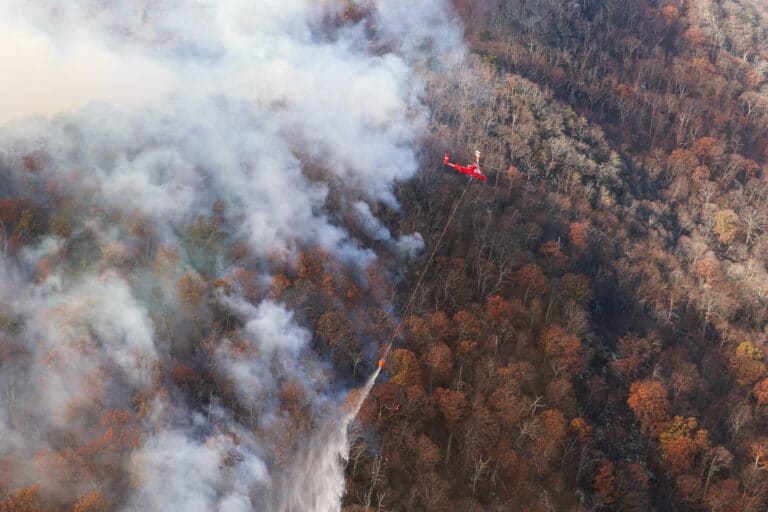by Sasha Greenspan
How do schools of fish and flocks of birds move in synchronicity?
Submarine school spirit requires specialized sensory organs—and no slackers. The highly sensitive eyes of schooling fish are located on either side of the body, prime placement for viewing the sudden movements of schoolmates. Schooling species also have well-developed lateral line organs, systems unique to fish and some amphibians. Extending the length of the body, the lateral line organ consists of a strip of cilia, ultra-sensitive hair cells surrounded by protective gel. Cilia detect tiny vibrations caused by the movements of surrounding fish, which further informs fish of their proximity to others.
When these sensory signals work together, school members can accelerate and change direction virtually in unison. By following a few easy guidelines—swim parallel to neighboring fish, swim closer to neighboring fish when separated, and swim farther from neighboring fish when crowded—schooling fish solve many problems, no slide-rule necessary. They outclass the competition when it comes to dodging predators, locating abundant food, and overcoming large prey. Plus, as is often the case on land, schools are full of potential mates.
Birds use only vision to form and maintain flocks, but the golden rules at work are surprisingly similar. Scientists agree that by simply flying closer to neighboring birds when separated, farther from neighboring birds when crowded, each bird contributes equally to flock formation.
In a 1984 shorebird study, biologist Wayne Potts observed that flock members change speed and direction much faster than the average reaction time of a single bird. Potts attributed this to the birds’ ability to tune in not only to the movements of immediate neighbors but also to anticipate more distant movements rippling through the flock like a wave. Potts also noticed that flocks usually follow members who initiate movement only when this movement is toward the general direction of the flock, which can prevent the flock from accidentally dividing. “Birds of prey usually direct their attack toward individuals isolated from the main flock,” explains Potts, “and this may well have exerted selection pressure for the evolution of coordinated maneuvers.”
——————–
Are the most colorful sunsets caused by air polution?
Usually, it’s just the opposite. Clean air is actually the main ingredient in brightly colored sunrises and sunsets.
All light that reaches Earth is first scattered by the molecules in the atmosphere. It is the scattering of blue and violet light that makes the sky look blue during the day, when sunlight takes a direct path through the atmosphere to the earth’s surface. Blues and violets are naturally scattered out of the sky as a sunset progresses, since sunlight follows a less direct path to reach Earth and must travel through more layers of atmosphere. This leaves visible the deep reds and oranges that we associate with sunsets.
In clean air, the molecules that scatter sunlight are extremely tiny and uniform. In contrast, many industry-produced air pollutants are made up of much larger and non-uniform particles, which further scatter and dilute vibrant evening hues. They also contribute to a more hazy, dull, muted color to the skies.
Clean air reduces the scattering of the reds and oranges, which intensifies these colors at sunrise and sunset. “Best of all is when high-level clouds reflect this red light,” asserts Henry ‘Doc’ Degrazia, a physics teacher and adventure seeker from Atlanta. “The clouds provide interesting patterns and enhance the most brilliant and beautiful sunsets.”







